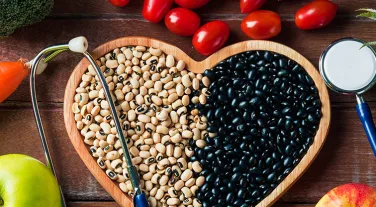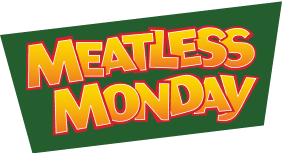
Using Meatless Monday to promote plant-based menu items can help meet customer demand for meat alternatives
Meatless Monday is a popular, internationally recognized meat reduction campaign. Its simple premise—skip meat one day a week for your health and the health of the planet—is easy for customers to understand and appreciate. Meatless Monday doesn't mean you have to eliminate meat from the menu. Instead, offer and highlight plant-based and meat-free options.
Best practices to promote Meatless Monday and increase sales of plant-based items
Menu recommendations:
- Use enticing words that describe the texture, taste, or smell of menu items (see list of descriptors below).
- List plant-based options among other items on the menu, not in a separate vegan, vegetarian, or meatless section.
- Do not label dishes as “vegan” or “vegetarian.” Instead use a small leaf, “v” or green heart icon to indicate when dishes are plant-based.
- Offer plant-based versions of familiar and traditional foods you serve. For example, if your best-selling items are cheeseburgers and lamb curry, offer a plant-based burger and vegetable or tofu curry.
- Increase the plant-based-to-meat ratio on your menu.
Food display:
- Make meatless meals look visually appealing and familiar.
- Don’t create a separate Meatless Monday or “vegetarian” section or station. Integrate all plant-based items into the usual food displays, grab-and-go cases, and online menus.
- Provide nutritional information that promotes the benefits of plant-based foods and helps dispel misconceptions about meatless meals.
- Promote meat-free and plant-based options as “climate-friendly” or “sustainable.”
Best practices for plant-based menu terminology
- Make food descriptions sound irresistible with enticing language and sensory words that describe the texture, taste, or smell of plant-based menu items, such as: juicy, crunchy, crispy, creamy, spicy, savory, and sticky.
- Incorporate traditional names that evoke comfort and familiarity, such as: Grandma’s dumplings, Mom’s meatballs, home-style chili, and holiday roast.
- Create a sense of place with geographic-themed names, such as: farm-to-fork, Cuban black beans, New York-style pizza, and Texas barbecue.
- Include provenance in the menu descriptions, such as: wild-foraged berries, local tomatoes, and upstate-grown apples.
- Highlight specific cuisines, such as: Tex-Mex, Thai, Mexican, Italian, Mediterranean, Indian, and Southern.
- Ensure descriptions convey the fulfilling qualities of meatless items, such as: filling, satisfying, satiating, and hearty.
Additional research on plant-based best practices:
- Greener by Default—defaulting to plant-based meals
- Good Food Institute—plant-based menu tips
- CoolFood—promoting sustainable choices in food service
- Good Food Institute—marketing and promoting plant-based proteins
- Meatless Monday in Food Service Best Practices Guide





